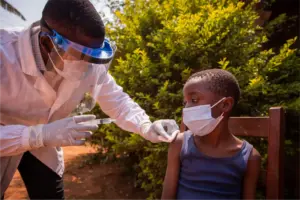
It has been half a decade since the first U.S. COVID-19 case was identified on January 20, 2020, in Snohomish County, Washington. The pandemic, which claimed over 1.2 million lives and caused more than 111 million infections in the U.S. by April 2024 (according to Worldometer), has left an indelible mark on the healthcare landscape. Two major health systems NYU Langone Health and Scripps Health reflect on the lessons learned that continue to shape their operations and preparedness for future crises.
Preparedness: A Foundation for Resilience
NYU Langone Health credits its preparedness efforts for its effective pandemic response. Since Superstorm Sandy in 2012, the organization has conducted tabletop disaster simulations. Remarkably, a January 2020 exercise on respiratory virus outbreaks provided critical foresight just weeks before the pandemic unfolded globally. This proactive approach enabled the health system to swiftly adapt, implementing strategies for patient care, resource allocation, and safety protocols.
Dr. Fritz François, Executive Vice President and Chief of Hospital Operations at NYU Langone Health, emphasized the importance of preparedness in areas such as ICU management, specialist training, and supply chain optimization. Establishing standardized treatment protocols, he said, ensured equitable and high-quality care across all facilities, whether in Manhattan, Brooklyn, or Long Island.
Six Core Lessons from NYU Langone Health:
Allocating space for respiratory virus patients in ERs and inpatient units.
Balancing patient load across multiple hospitals to avoid overwhelming resources.
Ensuring the availability of trained personnel, including specialists, nurses, and technicians.
Maintaining robust supplies of personal protective equipment (PPE).
Developing evidence-based treatment protocols with regular updates as new data emerged.
Monitoring and optimizing performance through dashboards to track patient admissions, ICU occupancy, and outcomes.
Dr. François highlighted that standardizing care was pivotal in maintaining health equity and performance during the crisis.
Innovation and Collaboration: Lessons from Scripps Health
For Scripps Health, the pandemic was a catalyst for innovation and enhanced collaboration. Telehealth, previously underutilized, became a lifeline. Before COVID-19, Scripps conducted just 188 telehealth consultations over six months in 2019. At the height of the pandemic, this number surged to 3,000 per day.
Dr. Ghazala Sharieff, Senior Vice President and Chief Medical and Operations Officer for Acute Care at Scripps, noted the efficiency gained from virtual staff meetings and regional coordination among chief medical officers (CMOs). These initiatives streamlined communication amid conflicting guidelines from federal, state, and local authorities.
Scripps also adopted load balancing across its five hospitals, ensuring no single facility was overwhelmed. Strengthening supply chain collaboration and hands-on crisis management further enhanced resilience.
Six Key Takeaways from Scripps Health:
Rapid scaling of telehealth services to meet patient needs.
Effective use of virtual staff meetings for operational efficiency.
Consistent messaging through regional CMO collaboration.
Unified crisis response as a health system rather than independent hospitals.
Deeper involvement of CMOs in supply chain processes.
Direct engagement of CMOs in command center operations during crises.
A Roadmap for the Future
The COVID-19 pandemic underscored the critical importance of preparation, innovation, and collaboration in healthcare. From NYU Langone Health’s standardized care protocols to Scripps Health’s telehealth revolution, these lessons provide a blueprint for navigating future public health emergencies. As healthcare systems continue to adapt, the insights gained from the pandemic serve as a guiding light for resilience and improved patient care in an uncertain world.








